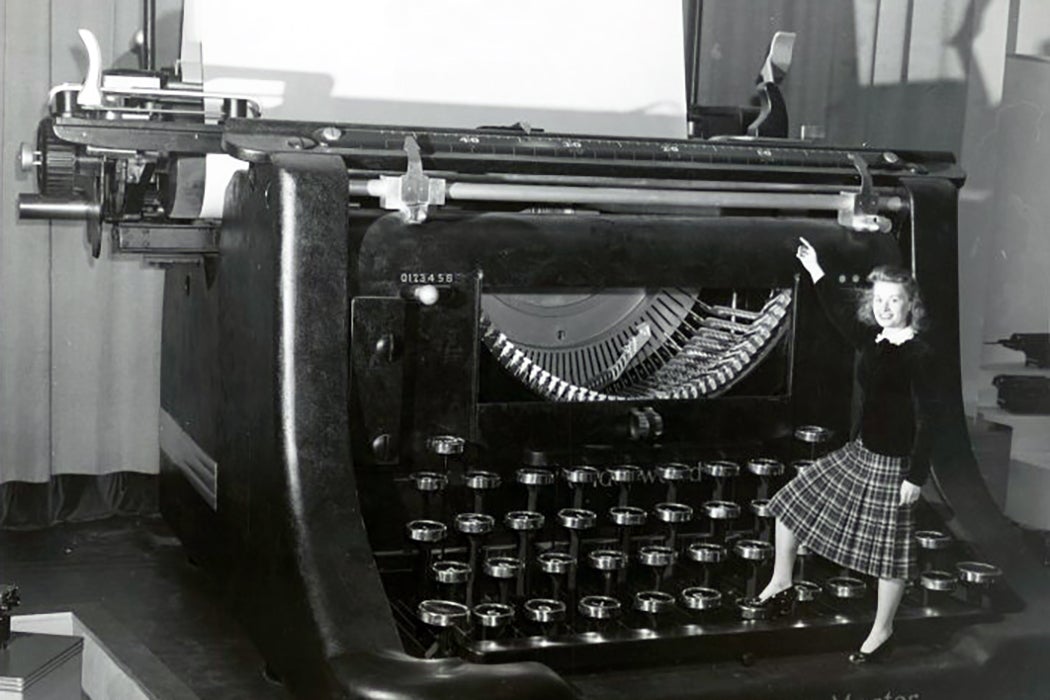After decades of development, voice recognition technology is beginning to compete with typing when it comes to sending texts, interacting with computers, and even writing whole articles. The end of typing could shake things up, judging from how much typing changed the world when it was first introduced.
In 1888, the typewriter as we know it was less than a decade old, but it was already changing the shape of the business world, according to an account by P.G. Hubert, Jr. published that year. “With the aid of this little machine an operator can accomplish more correspondence in a day than half a dozen clerks can with the pen, and do better work,” Hubert wrote. He noted that the machine had improved dramatically from an early form in 1874 that could only print capital letters, which “were more or less liable to get out of order.”
Citing “innumerable tests,” Hubert wrote that typewriters could save 40 minutes out of an hour, compared with the pen. And the growing ranks of businesses that depended on clerical workers had taken notice. The major typewriter maker, Remington—the creator of the QWERTY keyboard we all know and love—had gone from selling 1,400 typewriters in 1882 to 14,000 in 1887.
Remington manufactured the iconic new machine of business in the same factory that had built many of the revolvers used in the Civil War. The symbolism didn’t escape Hubert, who wrote: “In the old days the sword was forged into the ploughshare; in our day the gun has given way to the typewriter.”
This was an era when companies were beginning to hire women for clerical tasks, and Hubert noted that the new technology was a particular boon for female employment. He pointed out that typing generally paid as much or more as teaching, the main professional job open to women at the time.
Looking back at the typewriter’s early decades from the vantage point of 1986, Robert A. Waller also emphasized the economic and cultural changes the typewriter facilitated. Businesses began to apply Fredrick Taylor’s ideas about scientific management to the office, leading to the creation of secretarial pools. Typewriters helped manufacturers’ business offices grow in tandem with faster production and more extensive transportation networks.
Meanwhile, the growing employment of single women gave them new economic power. New restaurants popped up catering to women workers. Some contemporary writers tied women’s growing employment in offices to the fight for suffrage, while some religious leaders decried the opportunities for sin created by the mixing of genders in the workplace.
Waller concludes that we ought to look at the typewriter as the equal of the telephone and the electric light in creating the new business world of the twentieth century.
“Overall, the nation’s characteristic mania that nothing is worth doing unless done quickly was accentuated by the speed with which the typewriter could perform writing chores,” he writes.
Today, that same mania could push us to shift away from typing altogether.







